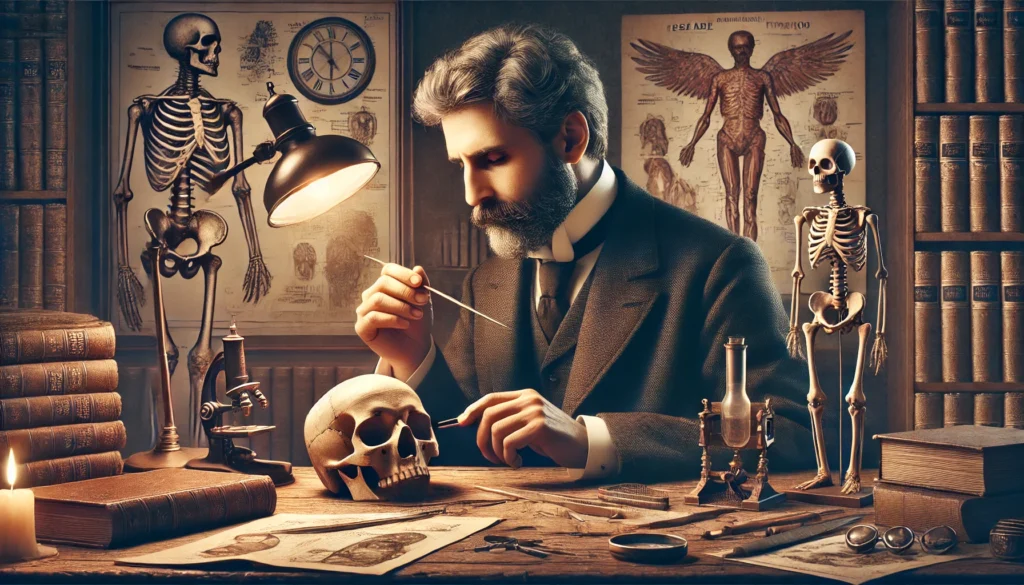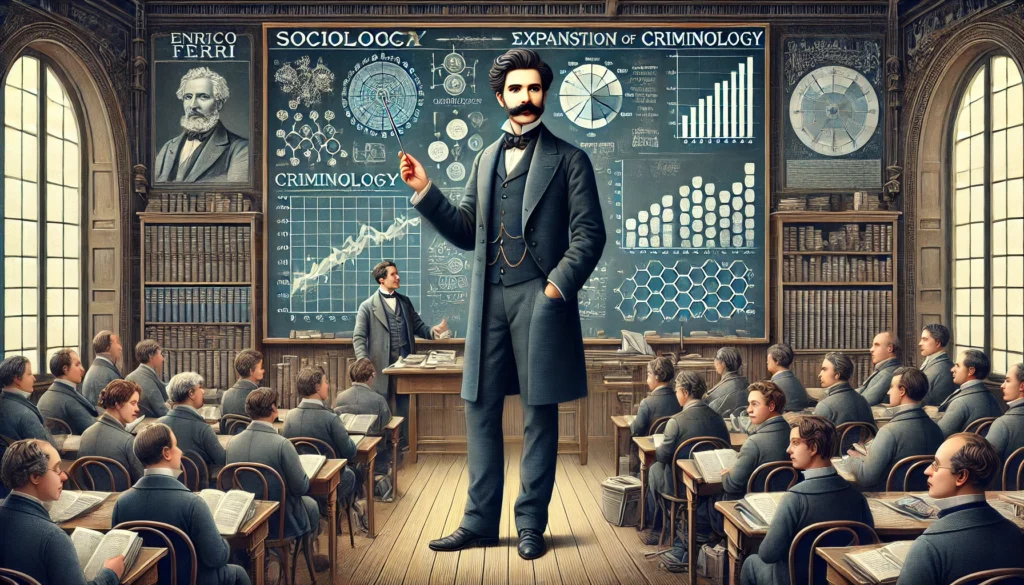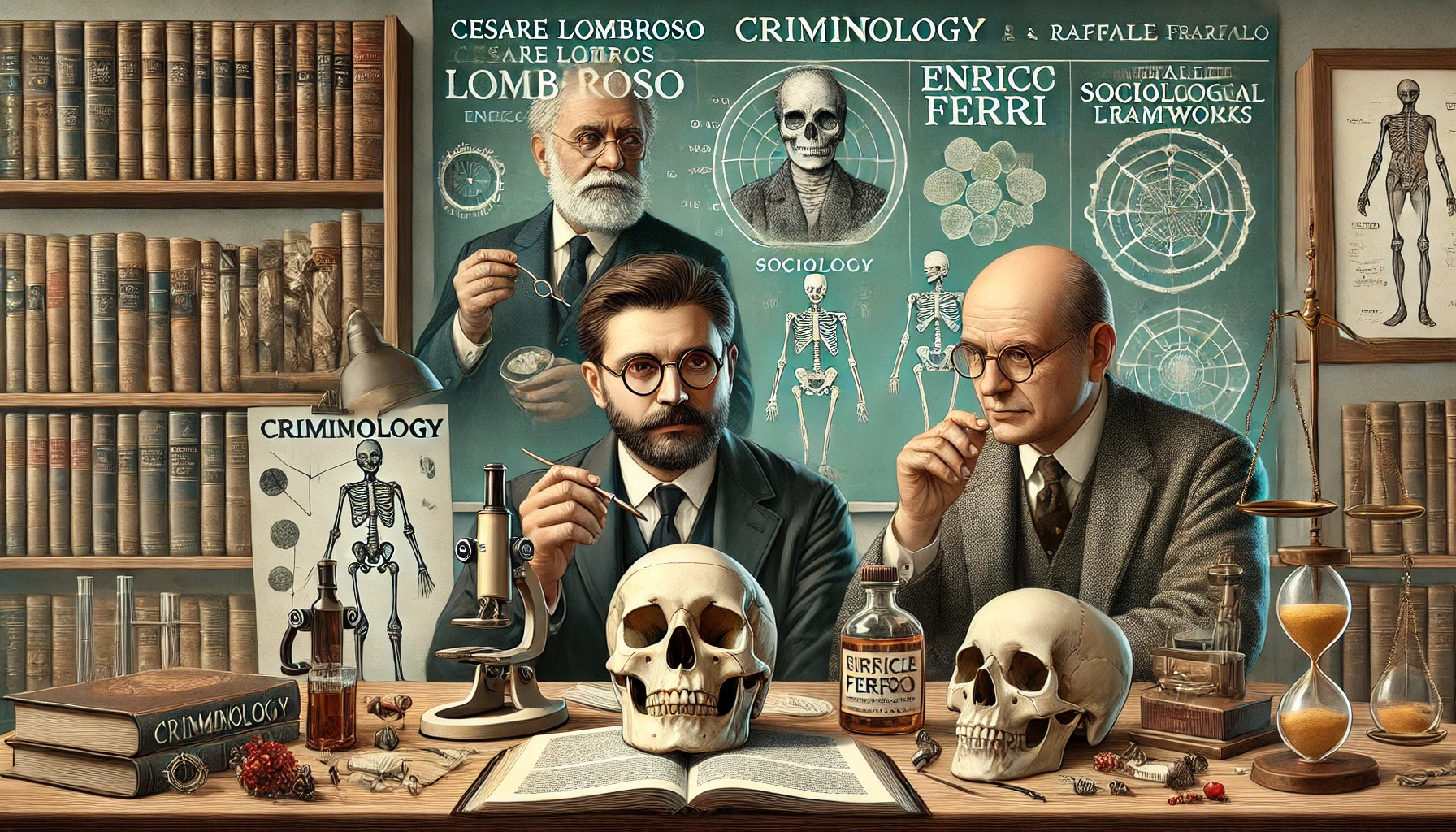Introduction
Criminology, as a scientific discipline, has undergone significant evolution since its inception. The 19th century witnessed a paradigm shift from philosophical and theological explanations of crime to empirical and scientific approaches. At the forefront of this transformation were three Italian scholars: Cesare Lombroso, Enrico Ferri, and Raffaele Garofalo. Together, they laid the foundations of the Positivist School of Criminology, offering groundbreaking insights into the causes of criminal behavior. Their contributions continue to influence modern criminology, blending biological, sociological, and legal perspectives to address crime comprehensively. This article explores their pivotal roles, delving into the theories, criticisms, and lasting impacts of their work.
Cesare Lombroso: The Father of Modern Criminology
Background
Cesare Lombroso (1835–1909) was a physician, psychiatrist, and criminologist whose groundbreaking work established criminology as a scientific discipline. Born in Verona, Italy, Lombroso initially practiced medicine, focusing on psychiatry and forensic studies. His clinical experiences and anthropometric measurements of criminals laid the groundwork for his most famous theory.
Key Contributions
- The “Born Criminal” Theory Lombroso’s seminal theory posited that criminal behavior was biologically predetermined. He argued that certain individuals were “born criminals” with atavistic traits resembling primitive humans. These physical anomalies, such as asymmetrical facial features, excessive jaw size, or long arms, were considered markers of criminality.
- Anthropological Approach Lombroso pioneered the use of anthropometric studies, measuring skulls and other body parts to identify correlations between physical characteristics and criminal tendencies. His 1876 book, L’Uomo Delinquente (The Criminal Man), detailed these findings and categorized criminals into types: born criminals, occasional criminals, and criminals by passion.
- Integration of Science into Criminology Lombroso emphasized the importance of empirical evidence and scientific methods in studying crime. His approach shifted criminology away from classical theories based on free will and rational choice.
Criticism and Legacy
While Lombroso’s theories have been criticized for their deterministic nature and lack of sociological consideration, they marked a crucial turning point in criminology. Modern research has debunked many of his claims, yet his emphasis on empirical study and interdisciplinary approaches remains influential.

Enrico Ferri: The Sociological Expansion of Criminology
Background
Enrico Ferri (1856–1929) was a student of Lombroso and a prominent criminologist in his own right. A lawyer by training, Ferri’s interest in crime extended beyond biological explanations to encompass social, economic, and environmental factors. His holistic perspective significantly expanded the Positivist School’s scope.
Key Contributions
- Theory of Multiple Factors Ferri argued that crime could not be attributed solely to biological predispositions. Instead, he proposed a multifactorial model incorporating:
- Physical Factors: Climate, geography, and population density.
- Social Factors: Poverty, education, and family structure.
- Psychological Factors: Individual temperament and mental health.
- Emphasis on Crime Prevention Ferri believed that society’s response to crime should focus on prevention rather than punishment. He advocated for social reforms to address root causes, such as poverty and inequality, which he viewed as significant contributors to criminal behavior.
- Practical Applications As a politician and criminologist, Ferri promoted policies that integrated criminological insights into legal and social systems. His works, such as Sociologia Criminale (Criminal Sociology), bridged academic research and practical implementation.
Criticism and Legacy
Ferri’s detractors argued that his emphasis on external factors downplayed individual responsibility. Nonetheless, his contributions laid the groundwork for modern criminological theories that examine the interplay between individual and societal influences.

Raffaele Garofalo: The Jurist’s Perspective
Background
Raffaele Garofalo (1851–1934) was a magistrate and criminologist who brought a legal and moral dimension to the Positivist School. Unlike Lombroso and Ferri, Garofalo’s work focused on defining crime and its ethical implications within society.
Key Contributions
- Natural Crime Garofalo introduced the concept of “natural crime,” which he defined as acts that offend basic moral sentiments, such as probity and pity. He argued that such crimes were universal and transcended cultural or temporal boundaries.
- The Principle of Social Defense Garofalo emphasized protecting society from dangerous individuals. He advocated for punishments tailored to the offender’s capacity for rehabilitation and the severity of the crime.
- Criminological Jurisprudence As a jurist, Garofalo integrated criminology with legal studies, emphasizing the importance of aligning criminal laws with scientific insights into human behavior.
Criticism and Legacy
Critics of Garofalo’s work point to the subjective nature of “moral sentiments” and the potential for cultural bias. However, his emphasis on societal protection and legal reform influenced both criminology and criminal justice systems worldwide.

Comparative Analysis of Their Contributions
Shared Foundations
- All three scholars rejected classical criminology’s reliance on free will, embracing deterministic and empirical approaches.
- They emphasized the importance of interdisciplinary methods, combining biology, sociology, and law.
Divergences in Perspective
- Lombroso focused on biological determinism, while Ferri prioritized social and environmental factors.
- Garofalo’s legalistic approach contrasted with Lombroso’s anthropological methods and Ferri’s sociological theories.
Collective Impact
- Together, their work established criminology as a scientific discipline.
- Their ideas paved the way for modern theories that integrate biological, psychological, and social dimensions.
Modern Relevance of Their Theories
- Biological Research Advances in genetics and neuroscience have revived interest in Lombroso’s ideas, albeit in a more nuanced context.
- Sociological Studies Ferri’s multifactorial approach remains central to understanding crime’s complex causation.
- Legal Reforms Garofalo’s emphasis on tailored punishments and social defense continues to influence criminal justice policies.
Conclusion
Cesare Lombroso, Enrico Ferri, and Raffaele Garofalo were trailblazers in criminology, each contributing unique perspectives that collectively transformed the discipline. Lombroso’s biological theories, Ferri’s sociological insights, and Garofalo’s legal innovations laid the groundwork for a comprehensive understanding of crime and its prevention. While their ideas have been refined and, at times, contested, their legacy endures in the ongoing quest to unravel the complexities of criminal behavior and build a safer, more just society.
اكتب شيئًا…

